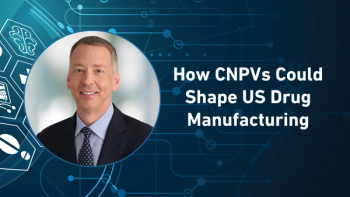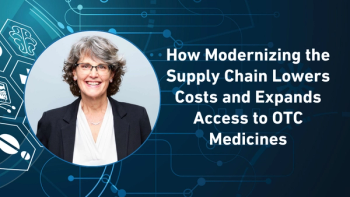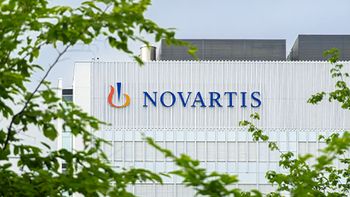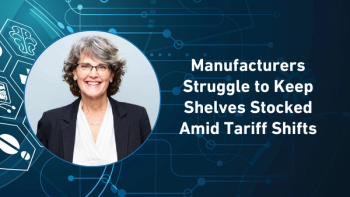- Pharmaceutical Commerce - October 2025
- Volume 20
- Issue 5
Greener, Smarter, and Less Expensive: How Pharma Packaging is Evolving
Key Takeaways
- The pharmaceutical industry is under pressure to adopt sustainable packaging, with regulations like the EU's Packaging and Packaging Waste Regulation pushing for recyclable solutions by 2035.
- Companies are prioritizing sustainability, with 81% focusing on eco-friendly packaging and significant strides in sustainable practices, such as a 25% increase in adoption since 2023.
As the sentiment of surveyed dangerous goods experts backs up, updated packaging pursuits can boost efficiency and cut costs—while mitigating the environmental impact.
We all know that precision isn’t optional when it comes to pharmaceutical transport—oftentimes, there are literally lives on the line. One tiny temperature change can mean compromised vaccines or invalid lab samples. So, the built-in complexity within the pharmaceutical supply chain makes sense.
Still, how do you properly ship pharmaceutical products while also being environmentally conscious?
Today, the pharma industry is under serious pressure to replace outdated materials with reusable options, and the regulations are catching up. The proposed Packaging and Packaging Waste Regulation in the European Union, for example, would require all pharma packaging to be “recyclable at scale” by 2035.1 It’s designed to “boost business and innovation in Europe while protecting people and the planet.”2 Similar regulations could soon be proposed in the US and in other parts of the world.
If you want to stay ahead of the curve (and avoid scrambling later), the time to rethink your pharma packaging is now. Done right, updated packaging can also boost efficiency and cut costs while also mitigating its environmental impact.
Environmental responsibility by the numbers
Labelmaster, IATA, and HCB surveyed more than 1,000 dangerous goods (DG) pros around the globe to understand where the DG industry is heading. We found that a whopping 81% of surveyed companies are prioritizing sustainability, with nearly half upping their investment in eco-friendly packaging, double the number from 2023.3
What are some of the ways these companies are tackling sustainability initiatives? Here are the stats:
- 42% are developing new processes to reduce environmental impact (which can also give your productivity a boost).
- 48% are working with environmentally responsible suppliers (the right partner matters).
- 48% are also sourcing more sustainable packaging (and reaping other benefits such as saved time).
The good news? Phama companies have already made significant strides:
- Sustainable packaging adoption is up 25% vs. 2023.
- Packaging material usage has dropped by 40% in the last several years.
- Renewable energy in manufacturing is hitting 85% efficiency.4
But sustainability can still be an uphill battle. According to the EPA, containers and packaging make up most of the waste in the US—82.2 million tons of it.5 Sustainability hasn’t always been a priority with traditional packaging materials.
Expanded polystyrene (EPS) foam has been the go-to solution for pharma packaging for years. It offers decent insulation and a cheap price tag, but it’s harming the planet. It sticks around for centuries, sheds microplastics, and clogs landfills.
While modular cooler options exist, the assembly process is often cumbersome. Plus, traditional metal containers often used to ship hazmat are not reusable and frequently dent, creating significant waste.
What’s the smarter move?
Today’s sustainable packaging isn’t just “green,” it’s tougher and smarter. Here’s a rundown of some of the modern options:
- New recycled/recyclable plastics that offer superior chemical resistance and durability.
- Composite materials that combine strength and maneuverability, including bio-composites that use natural fibers, and corrugated shippers with thermal liners.
- Bio-based solutions or additives that help make existing packaging types, such as EPS, biodegradable.
- Modern packaging designs that meet rigorous safety/quality standards while offering reusable builds that keep going trip after trip; space-saving shapes that lower storage and transport costs; and enhanced seals that lock in product integrity.
What’s holding you back?
Unsurprisingly, that question for pharma manufacturers often starts with the current business environment. If DG pros have an idea to improve sustainability, only 44% have the data to back up that idea and influence change within their organizations.
Change can feel like a monumental task. Even when the benefits are obvious, it might seem easier to stick with what’s familiar.
However, here are three common objections—and how you can tackle them:
- Price tag panic. For years, the understanding has been: “Eco-friendly means more expensive.” However, advances in material science are closing the cost gap fast. Many next-generation materials now match or outperform traditional options in both quality and price. In short, you can go green without going broke.
- A compliance conundrum. DG packaging comes with a thick rulebook that can scare people off, but testing and certification methods have come a long way, making it easier (and faster) to prove your sustainable packaging is just as safe, compliant, and reliable.
- Change management meltdown. Swapping out packaging can sound like a logistical nightmare—what if it slows down operations? The reality, though, is that modern eco-friendly solutions are being designed for plug-and-play integration, sliding right into your existing workflows without missing a beat.
Six tips for pharma shippers
As you evaluate sustainable packaging options, of course you’re going to keep your business needs front and center, especially for cold chain logistics. Keep these six cold chain considerations in mind:
- Know your requirements. Temperature-controlled goods all have requirements that will impact packaging, storage, and shipping. Make sure you’re on top of temperature ranges, packaging, transit time, size, and weight restrictions, etc.
- Set clear goals. Do you want to save money on packaging? Reduce shipping costs? Speed up fulfillment? Knowing what you’re trying to accomplish (and how you’ll measure success) will help guide the selection of cooling systems, packaging, carriers, and more.
- Spot pain points. Do you have trouble keeping items cold during the summer? Is sourcing or disposing of packaging difficult? What could hold up a shipment in customs? Understanding your current pain points (as well as the potential pain points that may arise) will help you select solutions that align with your goals.
- Know the regulations. There is a wide range of regulations that impact how you pack, store, and ship temperature-controlled goods—from the FDA, DOT, and the regulatory bodies of individual countries. Know which rules apply to what you’re shipping, and take steps to ensure all stakeholders (employees, suppliers, 3PLs, carriers, etc.) are properly trained and adhering to these rules.
- Plan for the unexpected. A lot can go wrong when shipping temperature-controlled goods, so consider all potential supply chain disruptions. For example, if there’s a higher risk of a shipment being held up in customs, you may want to use more expensive packaging that maintains temperature longer or select a carrier that will re-ice a shipment if it is held up.
- Get the right experts in place. Auditing existing practices can be an invaluable first step to identifying where improvements can be made. To do this right, find an experienced hazmat packaging and shipping partner to help guide you to successfully reach your goals.
Sustainability continues to be an important decision-making component for pharma companies, so make sure today’s (and tomorrow’s) cold chain operations align with your company’s sustainability goals. Based on recent surveys, data, and customer conversations I’ve had personally, the future of hazmat and pharma packaging appears pretty clear: green, smart, and built to last.
About the Author
Nick Downey is a principal engineer at DGeo, the DG Solutions division at Labelmaster.
References
1. Green Shift in The Pharmaceutical Industry Through PPWR. World Pharma Today.
2. Packaging Waste Regulation: Boosting Business and Protecting the Planet. European Commission. September 10, 2025.
3. Global Dangerous Goods Confidence Outlook. Labelmaster. September 10, 2025.
4. Sustainable Pharmaceutical Packaging Market By Material (Plastic and Polymer, Paper and Paper Board, Glass, Aluminium Foil, Others); By Product (Primary, Secondary, Tertiary); By End Use (Pharma Manufacturing, Contract Packaging, Retail Pharmacy, Institutional Pharmacy) – Growth, Share, Opportunities & Competitive Analysis, 2024 – 2032.
5. Containers and Packaging: Product-Specific Data. EPA.
Articles in this issue
about 1 month ago
Pharmaceutical Commerce: October 2025 Interactive Digital Editionabout 1 month ago
Staying Current on Cold Chainabout 1 month ago
Surveying the Industryabout 1 month ago
Why Your EHR Messaging Must Be Real-Timeabout 1 month ago
Bridging People, Process, and Technologyabout 1 month ago
DSCSA Compliance: Milestones, More Deadlines—and the Road Aheadabout 2 months ago
Building Resilient, Sustainable Pharma Supply Chainsabout 2 months ago
To Be or Not to Be Material? That is the QuestionNewsletter
Stay ahead in the life sciences industry with Pharmaceutical Commerce, the latest news, trends, and strategies in drug distribution, commercialization, and market access.






